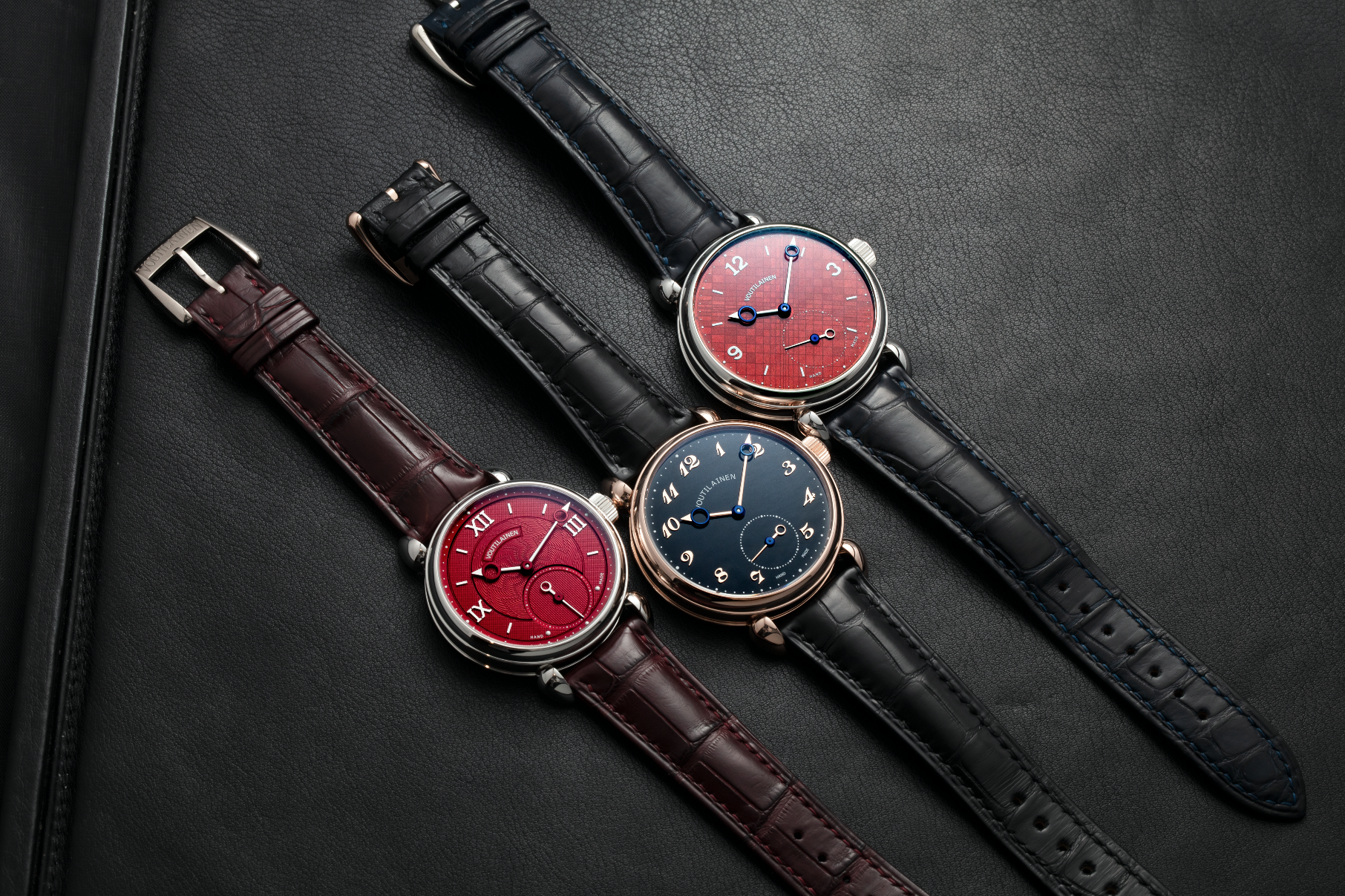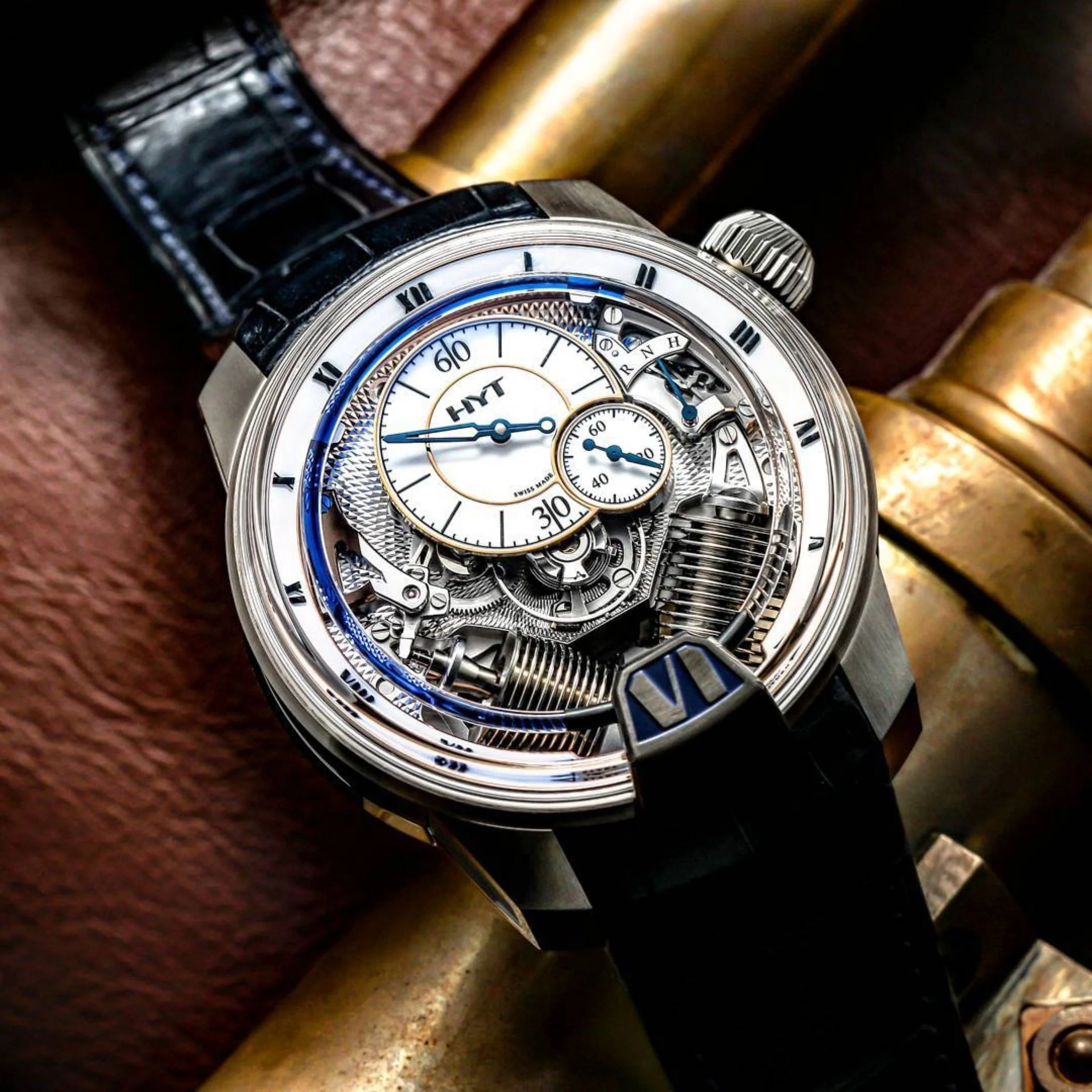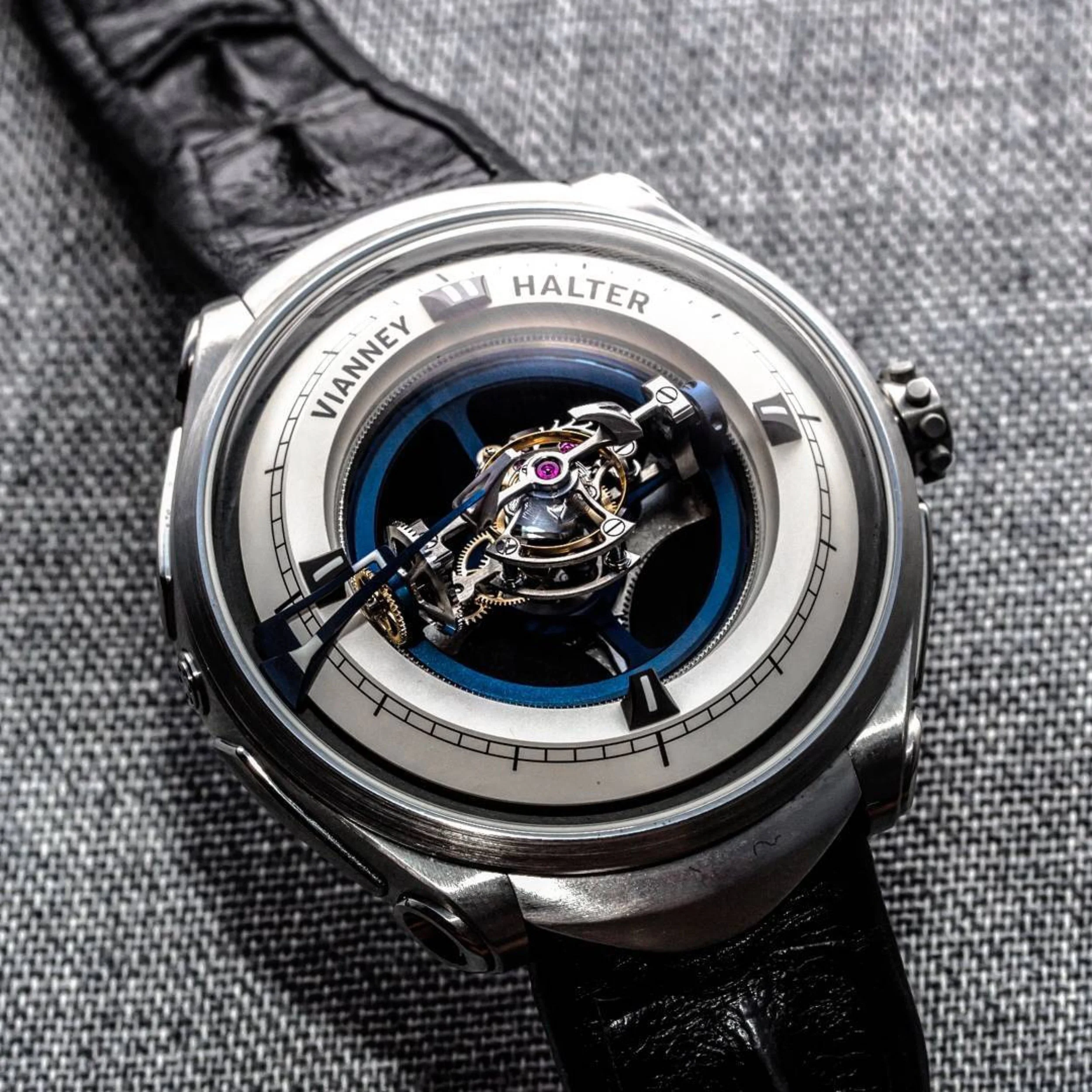The Appeal of Independent Watchmaking
Kari Voutilainen 2019 Vint-8 collection
The term “independent watchmaker” has become almost as common in the horological lexicon as the terms “world timer” or even “haute horlogerie,” and the reason for that may have a lot to do with the World Wide Web.
Independent watchmaking is not new. Watches and clocks were made independently from the beginning of… well… time, no pun intended. Not time, itself, mind you. But the act of determining time. And yet today, more and more, we’re seeing the independents, or, “indies” as they’ve been dubbed, not only come into their own through their appeal to serious collectors, but also join forces as to be seen as a greater presence to the horological community. Case in point: the Carré des Horlogers at the Salon International de la Haute Horlogerie or Les Ateliers at Baselworld. It is here that retailers, collectors, members of the press, and new watch enthusiasts can not only view the latest novelties on display, but can also meet with the watchmakers, themselves, in the flesh, which is likely a huge part of that appeal.
Photo credit: SIHH
Think about it: if you were impressed with a certain actor after seeing a handful of his movies and then you met with him in person at some point and he took the time to explain how he chose those roles or why he got into acting in the first place, would you not be star struck? Would you not want to see all of his movies afterward, especially if you liked their movies anyway? The parallel is similar when it comes to independent watchmakers. Whether you’re lucky enough to be able to visit with someone like Grégory Dourde and hear him wax poetic about the fluid timekeeping methods at HYT, or with a watchmaker like Romain Gauthier who can walk you through his mechanical timekeeping processes, being able to stand and speak with some of the minds behind independent watchmaking is cause enough to want to know more, and eventually, possibly, to want to invest in owning one of their creations.
HYT H2 Tradition in white gold and titanium. Photo Credit: SwissWatchGang
Another characteristic that appeals to collectors of independent watches is knowing that – unlike some of the more well-known, highly-advertised watch brands, independent watches are almost always limited in production. Some watches are “1 of 1”, meaning there is only one of that style using that caliber and having that design by that brand anywhere in the world. Those types of pieces often come with a hefty price tag and can also be quite popular at auction should the owner decide to sell. And not only are some of the watches limited in production, but often times with up-and-coming independent watchmakers – someone like Rexhep Rexhepi of Geneva-based Akrivia watches – the spaces they’re working in and the staff they’re working with are limited, too. Akrivia’s atelier is likely no bigger than the first apartment you’ve ever rented and yet he manages to produce some of the most sought-after independently-made timepieces on the market today.
Akrivia Heure Minute Esper Bleu. Photo Credit SwissWatchGang
GaryG, a watch collector and writer, weighed in with us on what appeals to him about independent watchmaking. “For me, it’s two primary things” states Gary. “One, the direct personal link to the maker, and two, the level of innovation. One of my sayings about the independents is ‘meet the maker, want the watch!’ As with any art or craft object, for me, understanding the motivations, processes, and struggles of the creator adds a lot to its appeal; and I love it that the final product is a direct reflection of the ambitions and personal vision of the person who made it. And that also links to innovation. Part of being an ‘indie’ is the ability to make outrageous pieces. Watches like Ludovic Ballouard’s Upside Down or any of Vianney Halter’s watches that the major brands would never green-light are perfect examples of this.” When asked if he thought the appeal for independently made watches will grow in the future, he responded, “I both hope and expect that it will. These watchmakers and their watches have great stories behind them, but more so than even that, I think a growing audience is becoming more aware of the authenticity of these pieces and the downright great quality of design, construction, and finishing involved.”
Vianney Halter Deep Space Triple Axis Tourbillon
That growing audience Gary mentioned likely has to do with the presence of both the reputable online watch publications that have come out of the woodwork over the last ten years, as well as watch forums, blogs, and of course, social media. But while these avenues may open the eyes of a growing number of younger watch enthusiasts, will price be the thing that deters them from investing in interestingly crafted, independent watches? GaryG doesn’t think so. “While it’s certainly true that the very top independent timepieces come with hefty price tags, there are great indie watches at more accessible price points, such as the SUF series from Stepan Sarpaneva – priced at about $4000.00 USD – and the Habring2 watches starting at around $5000.00 USD, with pre-owned pieces from those two makers and others available for even less than that. And let’s not forget that the first watch from up-and-coming independent designer Ming Thein was priced at $900!”
It’s clear the appeal of the independent watchmaker is becoming greater by the day, and with multi-media allowing for a wider audience to view timepieces via video stream in live time, it looks as if that appeal won’t be deteriorating anytime soon.





